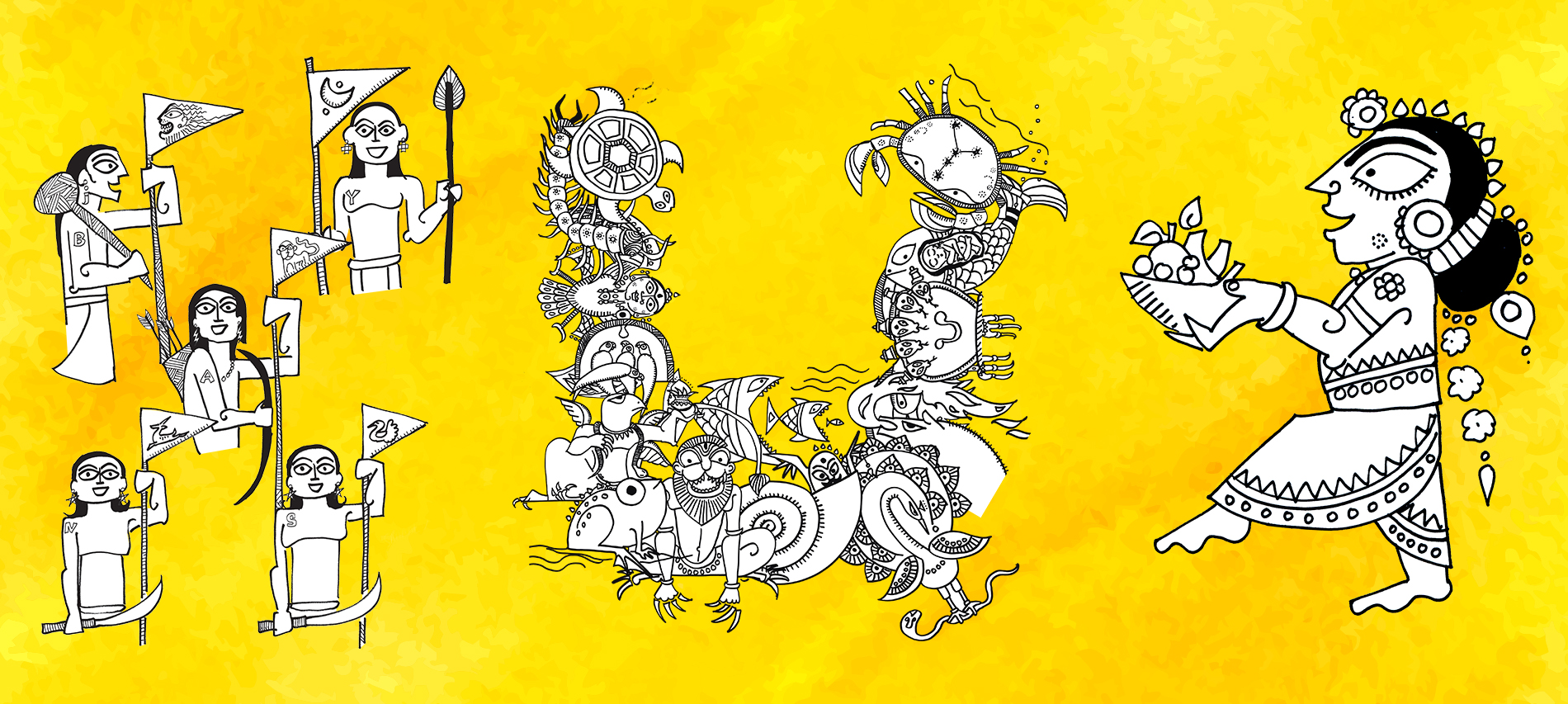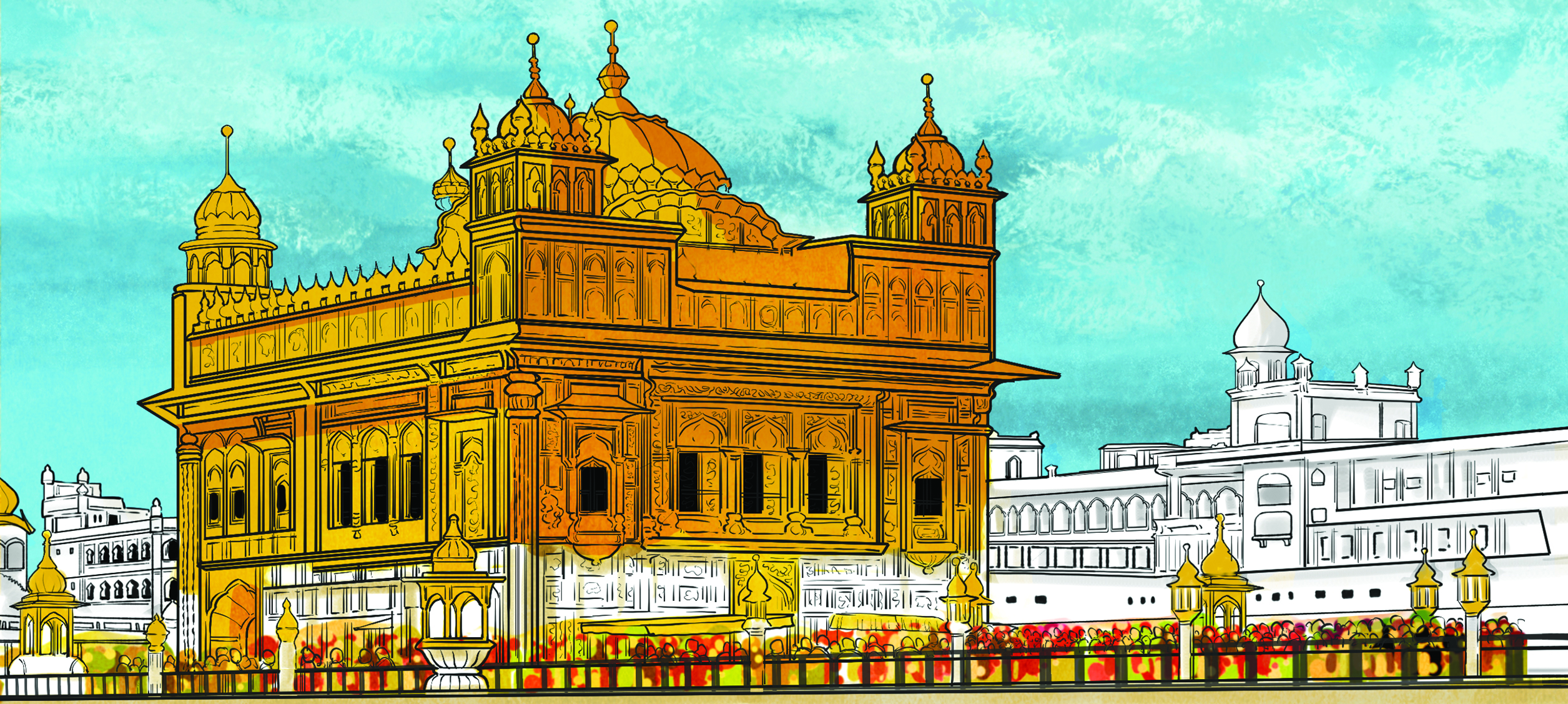Bhakti Mathur’s ‘Amma, Take Me to the Golden Temple’, is a fascinating guide through the rich history and architecture of the magnificent Darbar Sahib in Amrtisar.
As Amma takes her children, Shiv and Veer, through the corridors of the temple, following the stories of all the Sikh Gurus and getting a taste of the langar from the world’s biggest kitchen, we immediately wish we would be transported to the Golden Temple with them!
Before you get ready for your trip to the Golden Temple with your children, here’s a glimpse of the grandeur you’re about to witness!
It was well before the sun woke up. Amma and the two boys walked barefoot in the darkness across the vast courtyard. Amma cajoled the children with quiet words of encouragement. ‘Just a little bit more, Shiv.’ And a few steps later, ‘We are almost there, Veer.’ The boys, half asleep and too tired to protest, stumbled along, holding on tightly to Amma’s hands. What had seemed like a great idea the evening before—getting up early to meet a 400-year-old guru who lived in a floating temple made of gold—wasn’t looking so grand now!
‘Here we are!’ announced Amma. They had finally reached the magnificent arched gateway that led to the temple complex. The boys got a jolt as they stepped into the shallow pool of cold water meant to cleanse one’s feet before entering the holy grounds beyond. Shiv rubbed his eyes to check that he wasn’t still warm in his bed, dreaming. A Sikh man with a long black beard and wearing a blue tunic stood guard, towering over them, holding a tall spear in one hand.
‘Veer, look!’ Shiv whispered loudly. His brother was doing exactly that, staring at the impressive figure of the guard, as he too rubbed the sleep from his eyes. White teeth peeked from under the guard’s thick moustache as he offered a broad welcoming smile to the boys. They smiled back, relieved at the display of friendliness.
‘Come along now,’ urged Amma, her heart beginning to beat quickly. She gently pushed the boys across the wide threshold of the massive doorway. They stopped. Straight ahead, in the middle of a large lake, brilliantly lit and bright against the background of the dark sky, stood an elegant domed square structure seemingly carved out of solid gold. There it was. The Golden Temple of Amritsar!
Lost for words, the three took in the wondrous sight for a few long moments. A f lock of pigeons flew off their perch atop the shiny dome of the temple and the sound off lapping wings broke their trance. Amma, Shiv and Veer started walking down a f light of steps, taking in their magnificent surroundings. The temple stood in the middle of a square shaped lake, bordered on all four sides by a wide walkway of tiled marble. A narrow causeway connected the temple to the walkway. An array of buildings, shrines and monuments of different shapes and sizes, with minarets and domes rising above them, enclosed the complex.
They stepped on to the walkway and the marble felt soothingly cool under their bare feet. There was a smattering of people around. Some sat quietly by the water’s edge, moved by the soul-stirring calmness of the beauty surrounding them. Some prayed with their foreheads touching the ground or simply with their hands folded. Some were busy at work, sweeping the night’s accumulation of dust and dirt from the black-and-white marble f loor, while others still lay asleep, wrapped in light cotton blankets.
Soothing hymns sounded softly from loudspeakers attached to the walls along the edge of the walkway. Even though Shiv and Veer did not understand the words, the simplicity of the music stirred them. The loud sound of drumbeats came rolling from one part of the temple complex. Fully awake now, Shiv and Veer ran in the direction of the drums and it was now Amma’s turn to try and keep up with them. Where the drumbeats were coming from, a crowd had gathered in front of a multi-storeyed building made of white marble with brightly lit golden domes topping its roof.
‘This is the Akal Takht, the timeless throne,’ Amma told them.
In the middle of the crowd stood a golden palki, a palanquin. Its walls were engraved with intricate designs and it was lined with red velvet on the inside. It was exquisite. As one group of people decorated it with strands of marigold and roses, another group made its way towards it from the Akal Takht. In their midst, a man with a long silver beard stood wearing a brightblue turban, a sword hanging from a cloth belt tied around his waist. On his head he carried, with great reverence, a bundle wrapped in white silk.
‘Is that the guru, Amma?’ Shiv asked, tugging at Amma’s dupatta. ‘Is he really 400 years old?’
Amma smiled mischievously and said, ‘Yes and no. Yes, that is the guru and it is indeed 400 years old. But if you are asking me whether that man is the guru, then no, he is not. That man is carrying the guru.’
‘What!’ Veer exclaimed. ‘What do you mean, he is carrying the guru?’
‘The bundle on his head is the guru. It is a book called the Guru Granth Sahib, a collection of hymns, poems and words of wisdom of the real gurus from their lifetime, and of other wise men from more than 400 years ago. The Sikhs consider this book to be their guru.’
Shiv and Veer looked at Amma as if they had been cheated.
‘Don’t look so disappointed, boys! There is a wonderful story about how this book came to be the guru and I will tell you about it later. Now, let’s not miss out on the ceremony!’
People were craning their necks to look above those in front of them for a glimpse of the precious bundle as it was being carefully placed inside the palki. Then a group of men lifted the palanquin. Others ran towards it, some to take turns at helping to carry it, others just to touch it. People showered rose petals on the bearers and a single chant arose from the crowd: ‘Wahe Guru! Wahe Guru! Wahe Guru!’ A long procession soon formed behind the palki, swallowing Amma, Shiv and Veer as they moved along with it.
Get ready for your child to guide you through the Golden Temple the next time you visit!
Coming soon — ‘Amma, Take Me to Tirupati’.






























